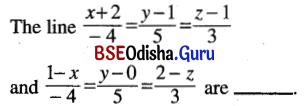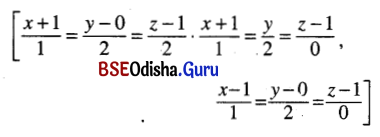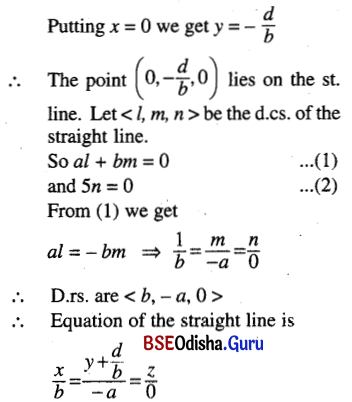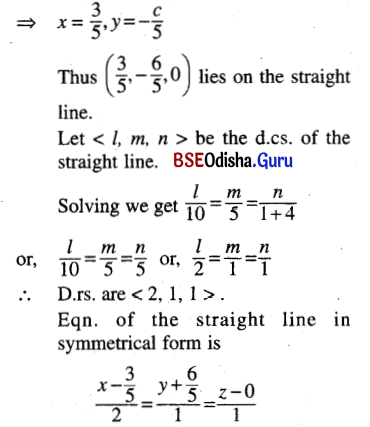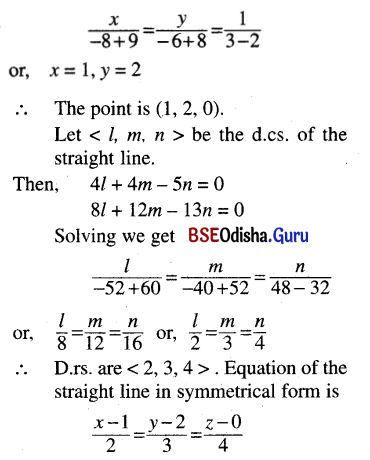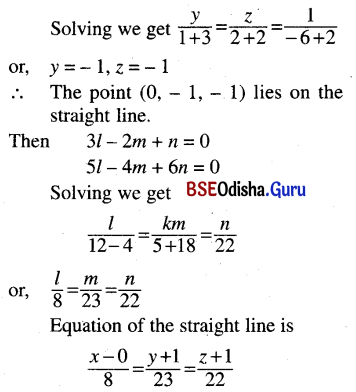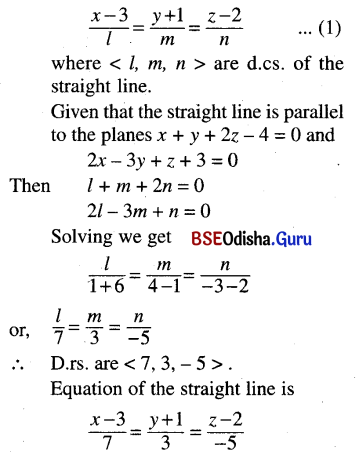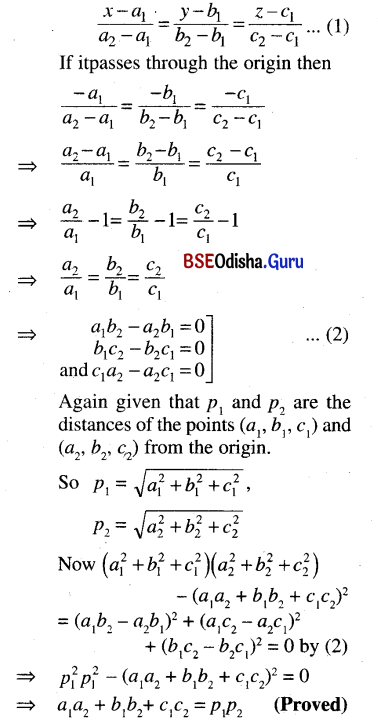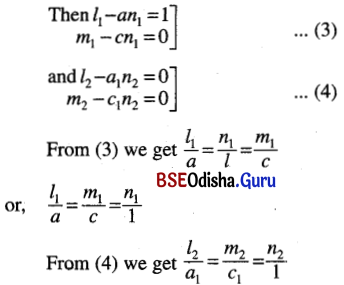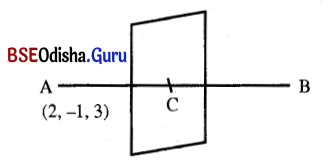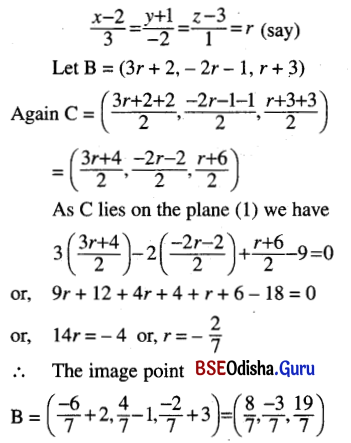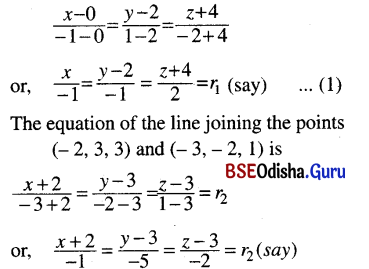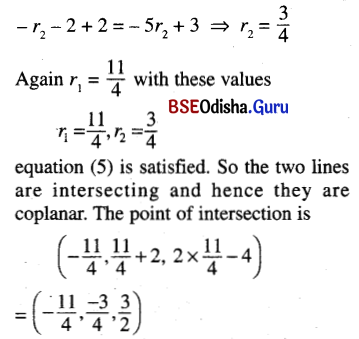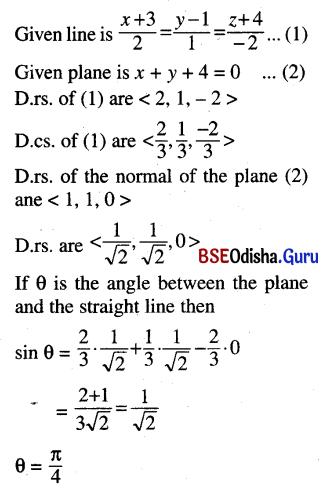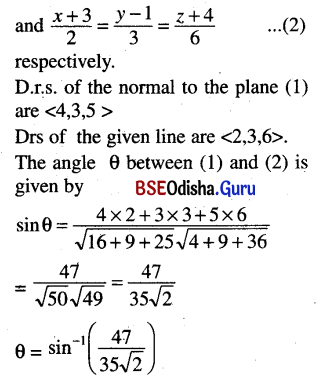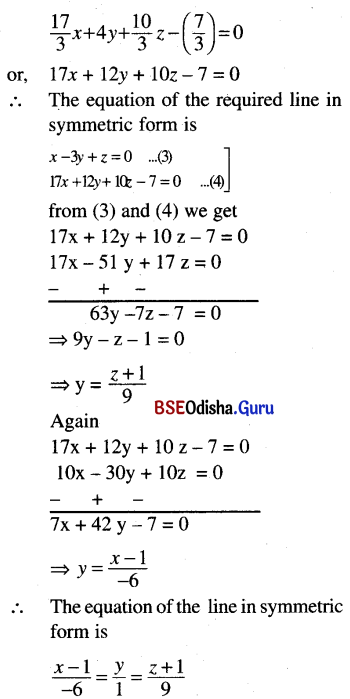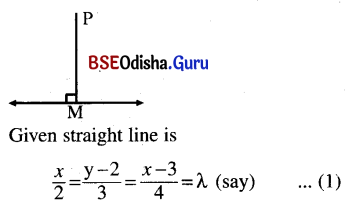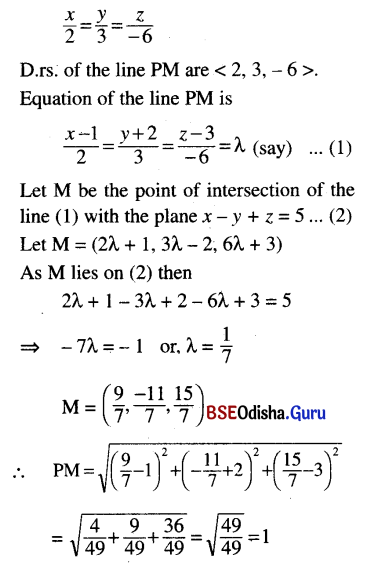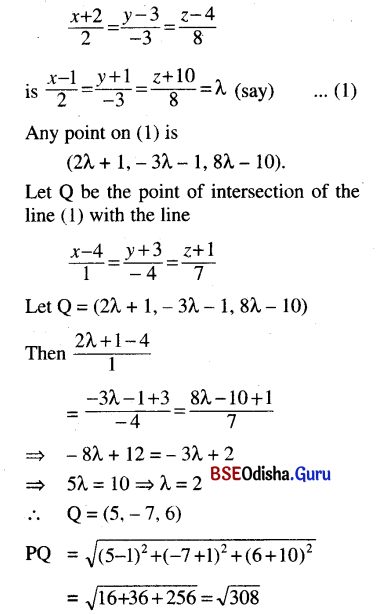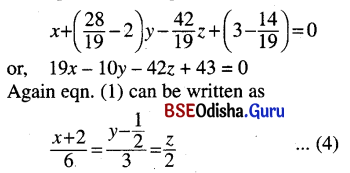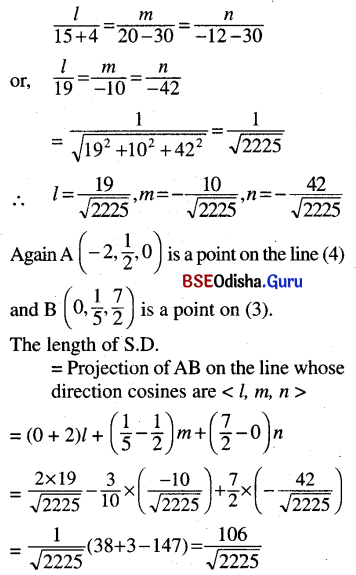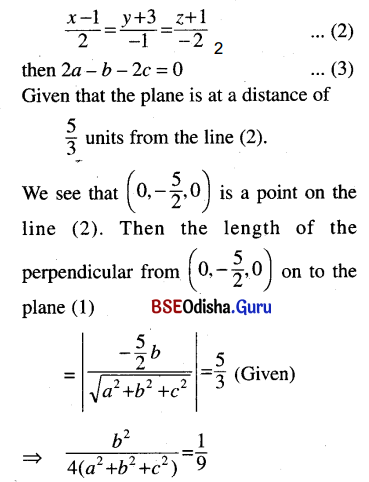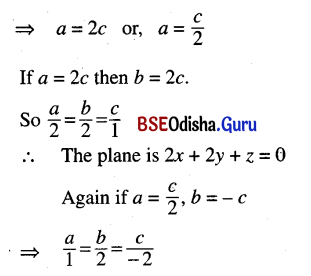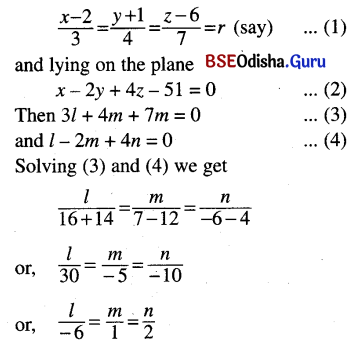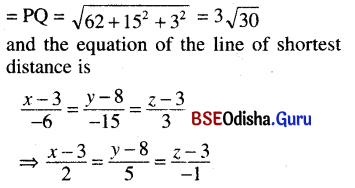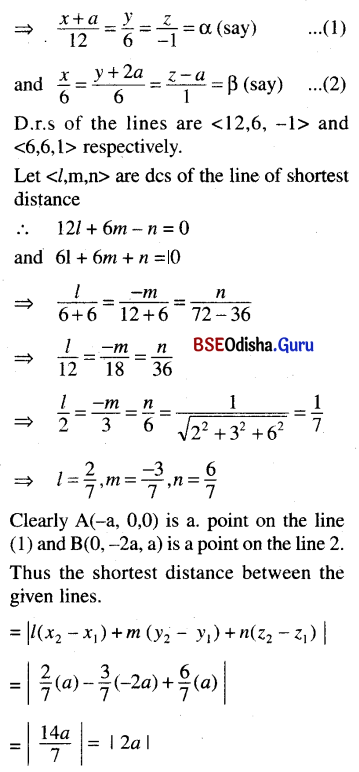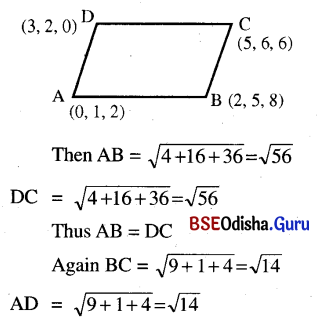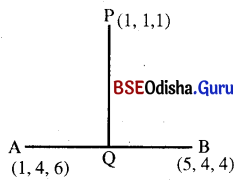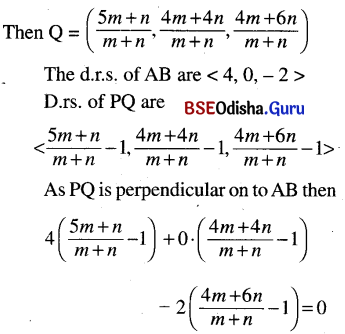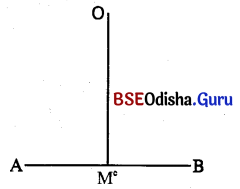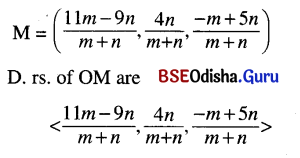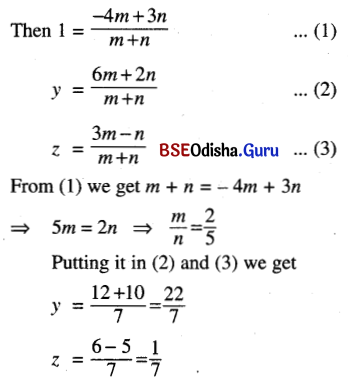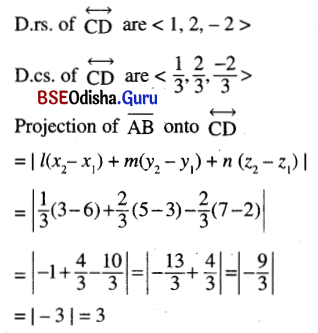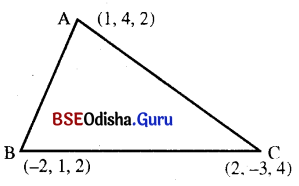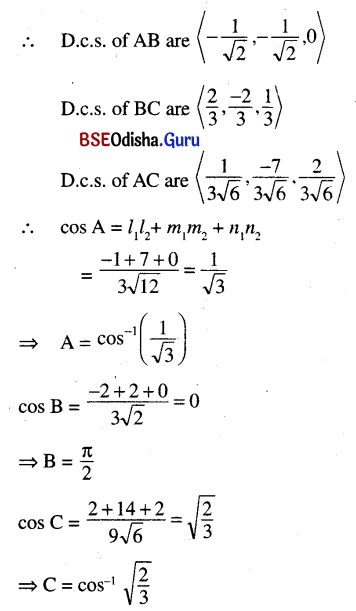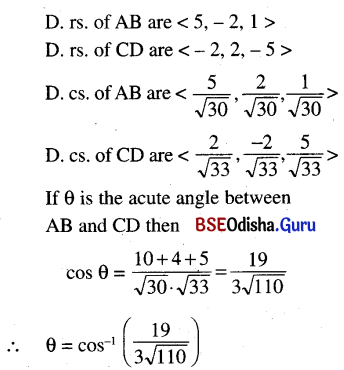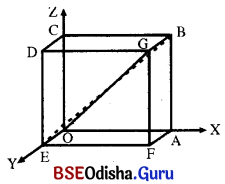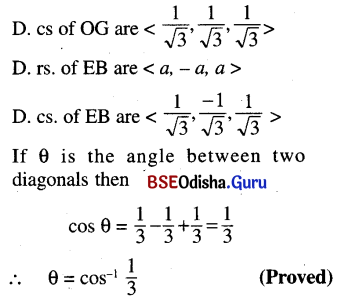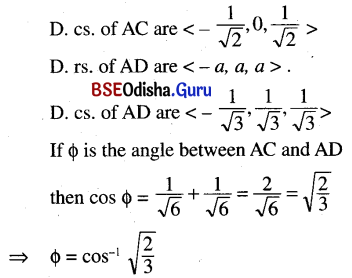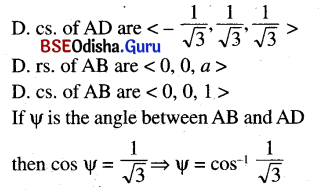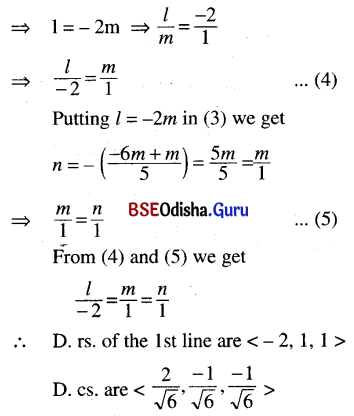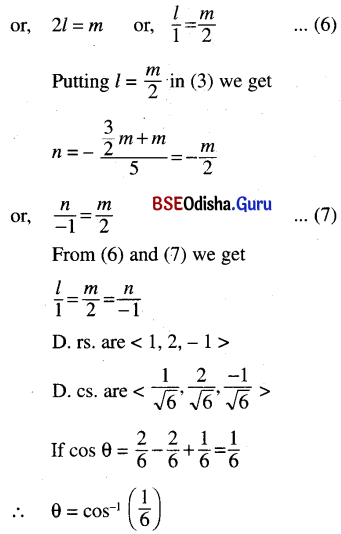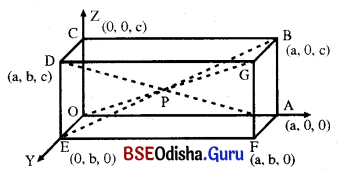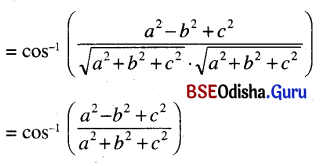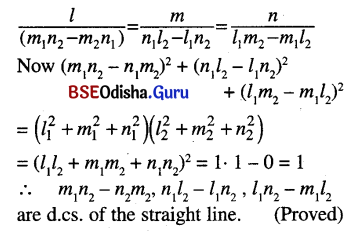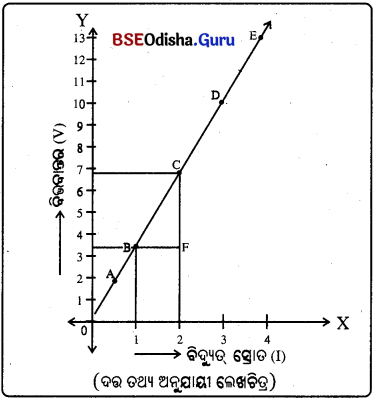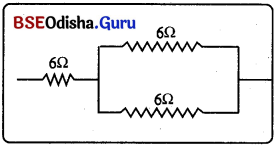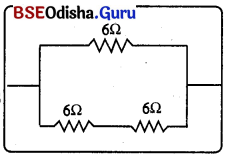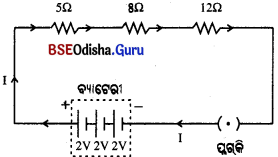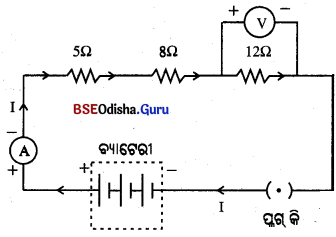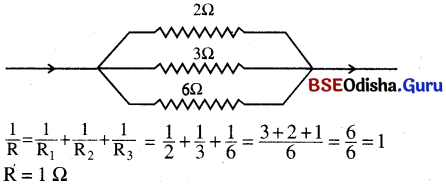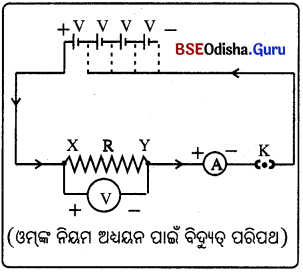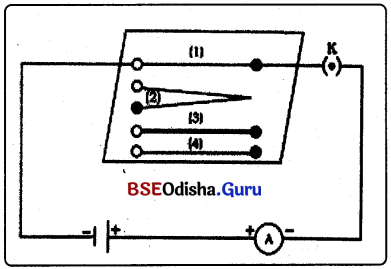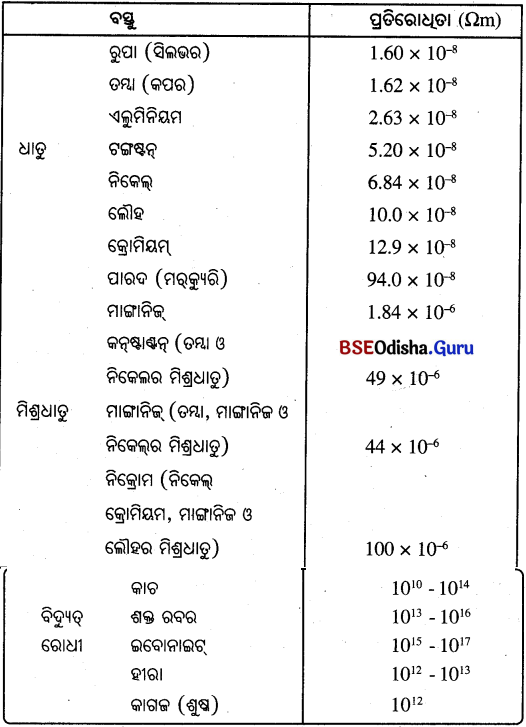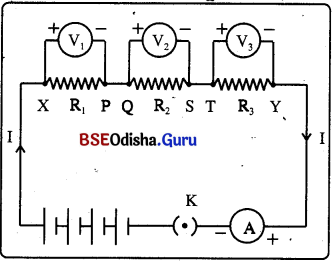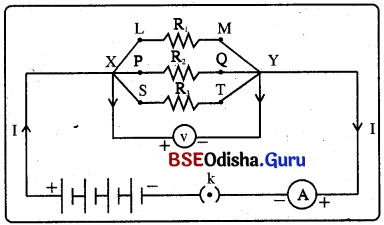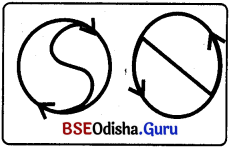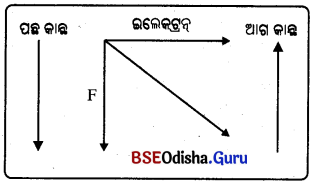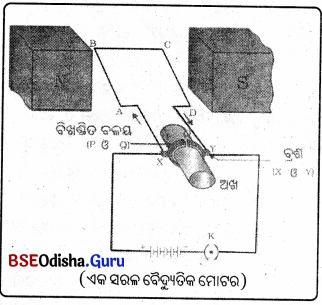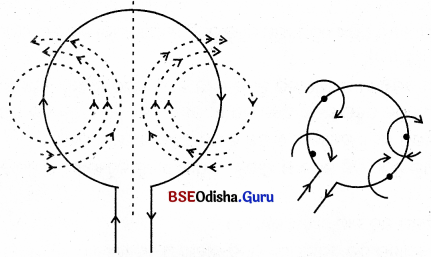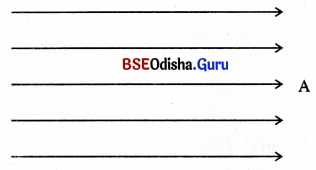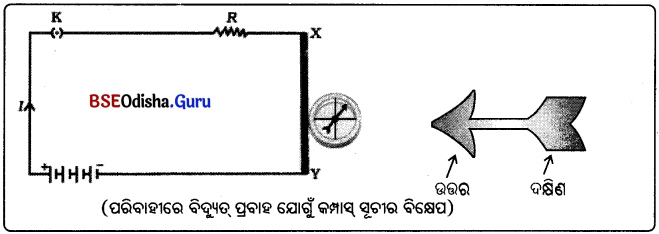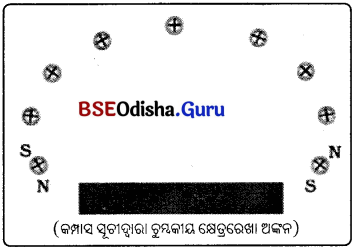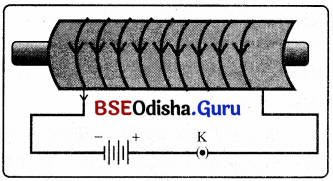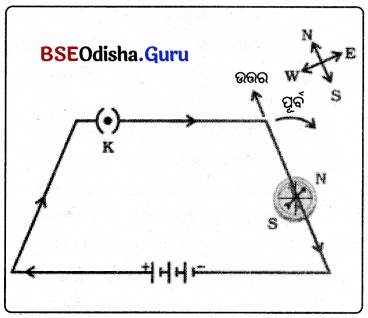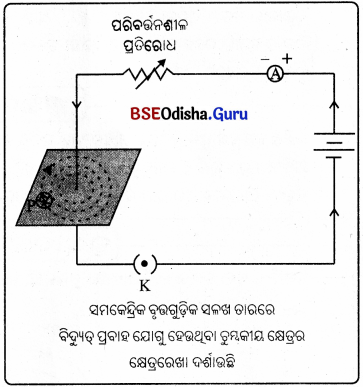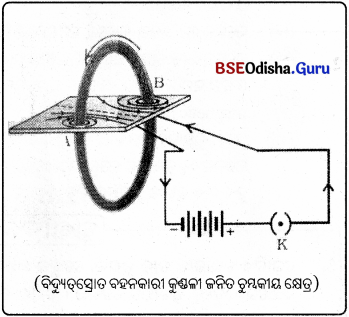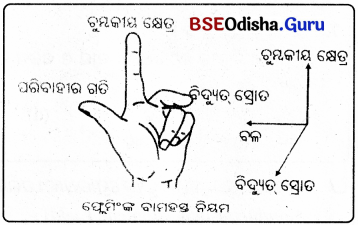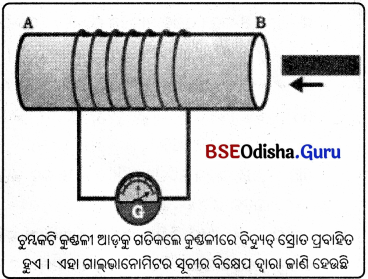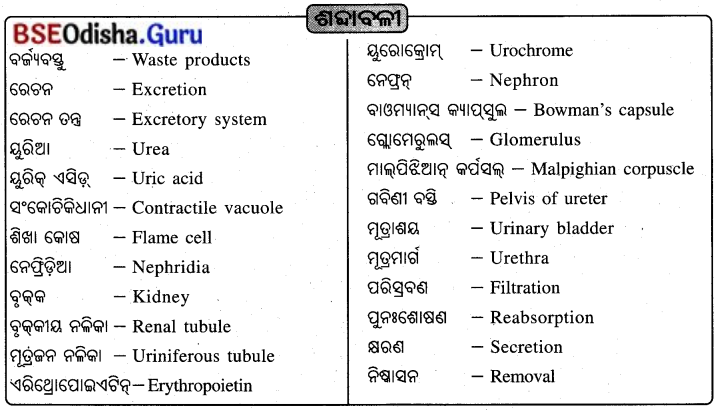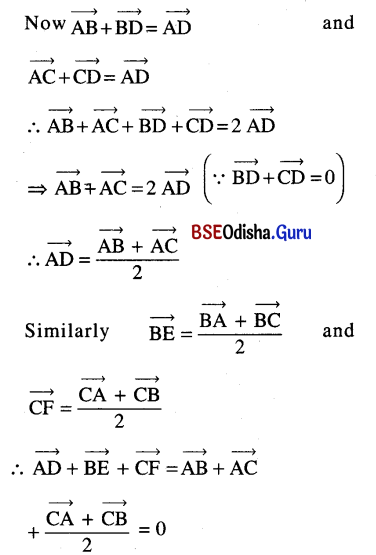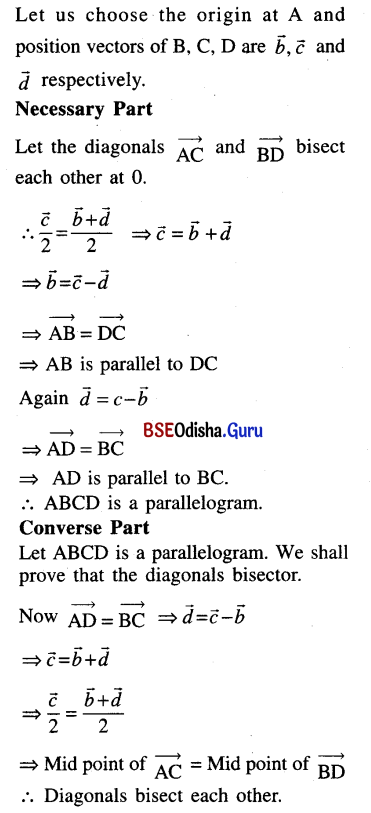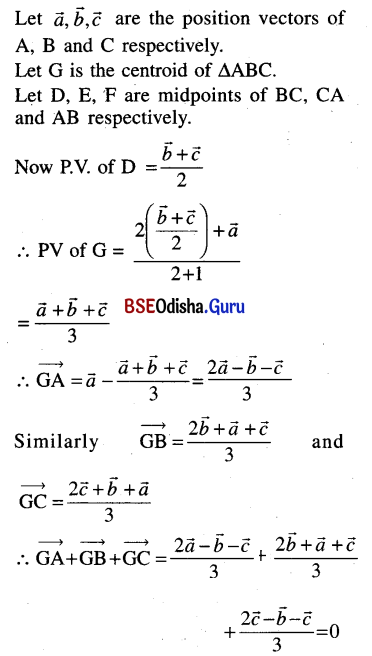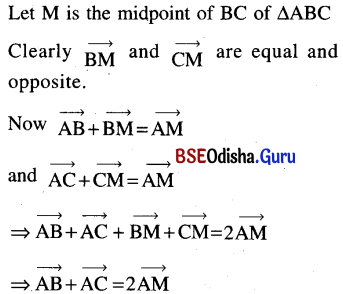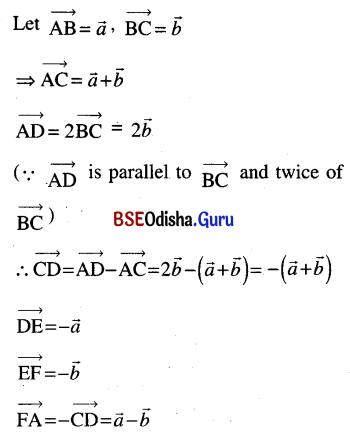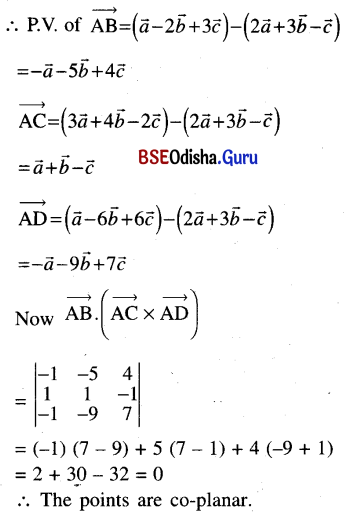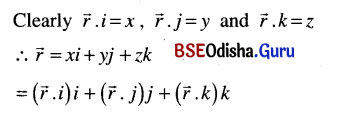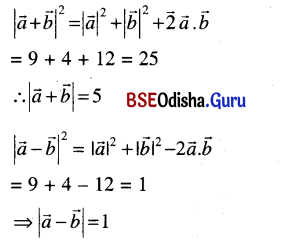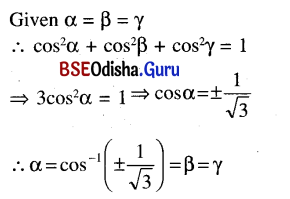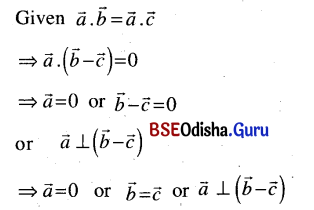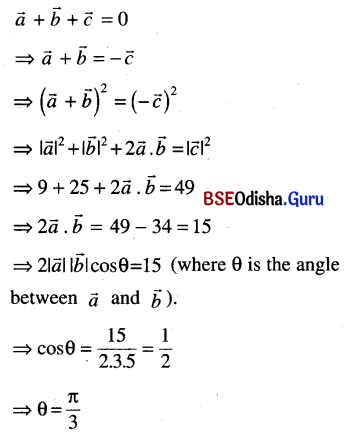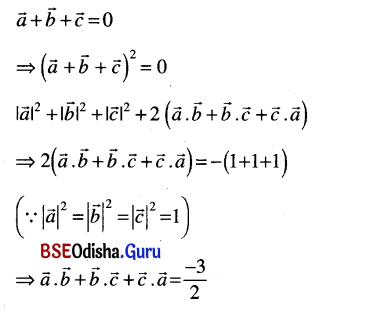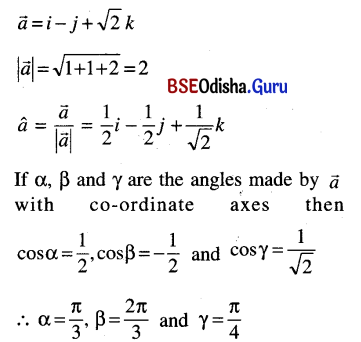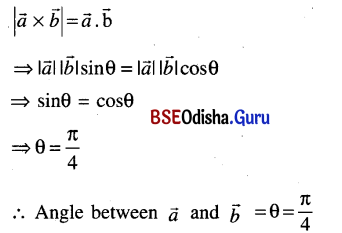Odisha State Board BSE Odisha 10th Class Hindi Solutions व्याकरण विभाग Textbook Exercise Questions and Answers.
BSE Odisha Class 10 Hindi व्याकरण विभाग
लिंग
प्रश्न 1.
दूर का पहाड़ सुन्दर लगता है। रेखांकित शब्द का लिंग बताइए।
उत्तर:
पुंलिंग
प्रश्न 2.
मेरी परीक्षा पन्द्रह दिन सरक गयी है रेखांकित शब्द का लिंग बताइए।
उत्तर:
स्त्रीलिंग
प्रश्न 3.
पंड़ित लड़कों को मुफ्त में पढ़ाते थे रेखांकित शब्द का लिंग बताइए।
उत्तर:
पुंलिंग
प्रश्न 4.
आदमी का इतिहास पुराना है। रेखांकित शब्द का लिंग बताइए।
उत्तर:
पुंलिंग
प्रश्न 5.
‘मांस’ – दिए गए शब्द लिंग निर्णय कीजिए।
उत्तर:
पुंलिंग

प्रश्न 6.
‘मूँछ’ – लिंग निर्णय करो।
उत्तर:
स्त्रीलिंग
प्रश्न 7.
‘दूध’ – लिंग निर्णय करो।
उत्तर:
पुंलिंग
प्रश्न 8.
‘पूँछ’ – लिंग निर्णय करो।
उत्तर:
स्त्रीलिंग
प्रश्न 9.
‘मर्यादा’ – लिंग निर्णय करो।
उत्तर:
स्त्रीलिंग
प्रश्न 10.
‘जान’ – लिंग निर्णय करो।
उत्तर:
स्त्रीलिंग

प्रश्न 11.
‘तलाश’- लिंग निर्णय करो।
उत्तर:
स्त्रीलिंग
प्रश्न 12.
‘नौकर’- सही लिंग परिवर्तन किजिए।
उत्तर:
नौकरानी
प्रश्न 13.
‘बंदर’ शब्द का स्त्रीलिंग रूप है
उत्तर:
बंदरिया
प्रश्न 14
‘आदमी’ का स्त्रीलिंग रूप लिखिए।
उत्तर:
औरत
प्रश्न 15.
‘कवि’ लिंग बदलिए।
उत्तर:
कवयित्री
प्रश्न 16.
‘माली’ – लिंग बदलिए।
उत्तर:
मालिन
प्रश्न 17.
‘पिता’ लिंग बदलिए।
उत्तर:
माता
प्रश्न 18.
‘सेठ’ – लिंग बदलिए।
उत्तर:
सेठानी
वचन
प्रश्न 1.
वचन का आकर्षण बहुवचन में लिखिए।
उत्तर:
वचनों का आकर्षण
प्रश्न 2.
“कलाकृतियाँ” का एकवचन रूप है।
उत्तर:
कलाकृति
प्रश्न 3.
काँटा कम से कम मत बोओ। – रेखांकित शब्द का बहुवचन लिखिए।
उत्तर:
काँटे
प्रश्न 4.
‘घोसले’ का एकवचन रूप है।
उत्तर:
घोसला
प्रश्न 5.
‘दोहा’ का वहुवचन रूप है।
उत्तर:
दोहे

प्रश्न 6.
‘मौसम’ का वहुवचन रूप है।
उत्तर:
मौसम
प्रश्न 7.
‘ऋतु’ का वहुवचन है।
उत्तर:
ऋतुएँ
प्रश्न 8.
‘सूचना’ का बहुवचन है।
उत्तर:
सूचनाएँ
प्रश्न 9.
‘गुफा’ का वहुवचन है।
उत्तर:
गुफाएँ
प्रश्न 10.
‘प्राण’ का बहुवचन है।
उत्तर:
प्राण
प्रश्न 11.
‘सुविधा’ का बहुवचन रूप है।
उत्तर:
सुविधाएँ
प्रश्न 12.
‘गिलहरी’ का वहुवचन रूप है
उत्तर:
गिलहरियाँ
प्रश्न 13.
‘खेत’ का वहुवचन रूप क्या है?
उत्तर:
खेत
प्रश्न 14.
‘सदियाँ’ का एकवचन रूप है।
उत्तर:
सदी
प्रश्न 15.
‘स्मृती’ का बहुवचन रूप है।
उत्तर:
स्मृतियाँ
प्रश्न 16.
‘धारा’ – वचन बदलिए।
उत्तर:
धाराएँ
प्रश्न 17.
‘जहाज’- वचन बदलिए।
उत्तर:
जहाज
प्रश्न 18.
‘कुत्ता’ – वचन बदलिए।
उत्तर:
कुत्
प्रश्न 19.
‘नौकरी’ – वचन बदलिए।
उत्तर:
नौकरियाँ

प्रश्न 20.
‘लकड़ियाँ’ – वचन बदलिए।
उत्तर:
लकड़ी
सर्वनाम ( पुरुषवाचक)
प्रश्न 1.
आपको यह काम करना है। इस वाक्य में प्रयुक्त सर्वनाम है…………….. ।
उत्तर:
यह
प्रश्न 2.
उसको जाने दो। इस वाक्य में प्रयुक्त सर्वनाम है।
उत्तर:
उसको
प्रश्न 3.
उन्होंने काम पूरा कर दिया। इस वाक्य में सर्वनाम है…………….. ।
उत्तर:
उन्होंने
प्रश्न 4.
पुरुषवाचक सर्वनाम नहीं है ……………….।
( ये, मैं, कौन, वह)
उत्तर:
कौन
प्रश्न 5.
प्रश्नवाचक सर्वनाम है………………।
(वे, कौन, यह, उसे)
उत्तर:
कौन
प्रश्न 6.
संबंधवाचक सर्वनाम है ………………. ।
(जो-सो, मैं, कौन, वे)
उत्तर:
जो सो
प्रश्न 7.
सर्वनाम छाँटिए।
( नाम, मोटा, कोई, मकान )
उत्तर:
कोई

प्रश्न 8.
मेरी माताजी खाना पका रही हैं \। इस वाक्य में प्रयुक्त सर्वनाम है………………..।
उत्तर:
मेरी
प्रश्न 9.
……………. नाम क्या है?
उत्तर:
तेरा
प्रश्न 10.
निम्नलिखित में से संबंधवाचक सर्वनाम है ……………….।
(मैं, कौन, जो, कहाँ)
उत्तर:
जो
प्रश्न 11.
मेरी माताजी खाना पका रही हैं। इस वाक्य में प्रयुक्त सर्वनाम है।
उत्तर:
मेरी
प्रश्न 12.
कोई (बहुवचन) + ने = ……………….. ( सही रूप लिखिए)
उत्तर:
किन्होंने
प्रश्न 13.
वह + ने = …………….. ( सही रूप लिखिए)
उत्तर:
उसने
प्रश्न 14.
ये + ने = ………………… ( सही रूप लिखिए)
उत्तर:
इन्होंने
प्रश्न 15.
वाक्य में संज्ञा शब्दों के स्थान पर प्रयुक्त होनेवाले शब्दों को ………………. कहते हैं।
उत्तर:
सर्वनाम
प्रश्न 16.
जिस सर्वनाम से कर्त्ता के विषय में कुछ बताया जाता ……………….. सर्वनाम कहते हैं।
उत्तर:
निजवाचक
प्रश्न 17.
किन्हीं चार प्रश्नों के उत्तर दिजिए। रेखांकित शब्द किस प्रकार का सर्वनाम है?
उत्तर:
अनिश्चयवाचक
कारक
प्रश्न 1.
दूध से दही बनता है। रेखांकित पद किस कारक में है?
उत्तर:
अपादान
प्रश्न 2.
महेश बुखार से पीड़ित है। रेखांकित पद किस कारक में है?
उत्तर:
करण
प्रश्न 3.
बन्दूक से गोली चली। रेखांकित अंश किस कारक में है?
उत्तर:
अपादान
प्रश्न 4.
छात्र ने शिक्षक से दो प्रश्न पूछे। रेखांकित पद किस कारक में है?
उत्तर:
कर्म
प्रश्न 5.
बच्चा साँप से डरता है। रेखांकित पद किस कारक में है?
उत्तर:
कर्म

प्रश्न 6.
मुझ पर भरोसा रखो। रेखांकित पद किस कारक में है?
उत्तर:
अधिकरण
प्रश्न 7.
कटक में बालियात्रा का मेला लगता है। रेखांकित पद किस कारक में है?
उत्तर:
अधिकरण
प्रश्न 8.
पेड़ पर बन्दर बैठा है। रेखांकित पद किस कारक में है?
उत्तर:
अधिकरण
प्रश्न 9.
विनोद माधव से लम्बा है। रेखांकित अंश किस कारक में है?
उत्तर:
अपादान
प्रश्न 10.
माता ने बच्चे को सुलाया। रेखांकित अंश किस कारक में है?
उत्तर:
कर्म
प्रश्न 11.
यह है शब्द संयोजन की बात। रेखांकित अंश किस कारक में है?
उत्तर:
संबंध कारक
प्रश्न 12.
कृपाशंकर घर से स्टेशन आया। रेखांकित अंश किस कारक में है?
उत्तर:
अपादान
परसर्ग / विभक्ति
प्रश्न 1.
वह तकिए……………… बैठा।
उत्तर:
पर
प्रश्न 2.
साँप नेवले ……………. डरता है।
उत्तर:
से
प्रश्न 3.
हृदय द्वार खोलने ……………. कुंजी है।
उत्तर:
की
प्रश्न 4.
पेड़…………………फल गिरा।
उत्तर:
से
प्रश्न 5.
जीवों …………..दया करो।
उत्तर:
पर

प्रश्न 6.
रोगी हैजे ……………… मर गया।
उत्तर:
स
प्रश्न 7.
लोगों की जान ………… जान आई।
उत्तर:
में
प्रश्न 8.
ठाकुर साहब गाड़ी ………… जान आई।
उत्तर:
से
प्रश्न 9.
कृपाशंकर …………. उतरने लगे।
उत्तर:
ने
प्रश्न 10.
उत्कृष्ट कलाओं …………… कई कुली बुलाये।
उत्तर:
का
प्रश्न 11.
क्या तुम्हारे बैठने …………… देश उत्कल।
उत्तर:
का
प्रश्न 12.
गर्व
उत्तर:
से.
प्रश्न 13.
वाणभट्ट …………….. ठेका लिया है?
उत्तर:
ने
प्रश्न 14.
गिल्लू ने मुक्ति ……………. कहो कि मैं भारतीय हूँ।
उत्तर:
की
प्रश्न 15.
मुँह. ……………….. .उफ न निकलने दो अपने लड़के से कहा।
उत्तर:
से
प्रश्न 16.
गाय ………….. घास दो।
उत्तर:
को
प्रश्न 17.
नरेन ……………….भाई पढ़ता है।
उत्तर:
का
प्रश्न 18.
मन …………….. अहंकार को स्थान मत दो।
उत्तर:
में
प्रश्न 19.
मेज ……………… किताबें रखी है।
उत्तर:
पर
प्रश्न 20.
खुले मैदान में, रेत …………… साँस ली।
उत्तर:
पर
क्रिया (सकर्मक और अकर्मक)
प्रश्न 1.
“घोड़ा दौड़ता है” – इस वाक्य में “ दौड़ता ” किस क्रिया का रूप है?
उत्तर:
अकर्मक
प्रश्न 2.
“राम फल खाता है”- इस वाक्य में ‘खाता’ किस क्रिया का रूप है?
उत्तर:
सकर्मक
प्रश्न 3.
सही अकर्मक क्रिया रूप छाँटिए:
(गाना, रोना, खाना, , देना)
उत्तर:
रोना
प्रश्न 4.
अकर्मक क्रिया रूप पहचानिए:
(पढ़ना, मिलना, बहना, कहना)
उत्तर:
बहना
प्रश्न 5.
सही सकर्मक क्रिया रूप छाँटिए:
( रहना, रोना, गाना, सरकाना )
उत्तर:
गाना

प्रश्न 6.
अकर्मक क्रिया रूप चुनिए:
(वनाना, भागना, समझना, पढ़ना)
उत्तर:
भागना
प्रश्न 7.
सही सकर्मक क्रिया रूप पहचानिए:
( उड़ना, कूदना, छोड़ना, याचना )
उत्तर:
छोड़ना
प्रश्न 8.
कौन सा क्रिया रूप अकर्मक है छाँटिए:
(खाना, देखना, मिलना, दौड़ना)
उत्तर:
खाना
प्रश्न 9.
सकर्मक क्रिया रूप छाँटिए:
(सोना, रोना, होना,
उत्तर:
पीना
प्रश्न 10.
सही सकर्मक क्रिया रूप पहचानिए:
(निकलना, सजाना, जीना, वदलना)
उत्तर:
सजाना
प्रेरणार्थक क्रिया रूप
प्रश्न 1.
‘पढ़ना’ – द्वितीय प्रेरणार्थक क्रिया का रूप है…………..।
उत्तर:
पढ़वाना
प्रश्न 2.
‘करना’- प्रथम प्रेरणार्थक क्रिया का रूप है …………….।
उत्तर:
कराना
प्रश्न 3.
‘कहना’ – द्वितीय प्रेरणार्थक क्रिया का रूप है ……………।
उत्तर:
कहलवाना
प्रश्न 4.
‘देखना ‘ – द्वितीय प्रेरणार्थक क्रिया का रूप है ……………..।
उत्तर:
दिखवाना
प्रश्न 5.
‘भीगना’ – द्वितीय प्रेरणार्थक क्रिया का रूप है…………….।
उत्तर:
भीगवाना

प्रश्न 6.
‘रोना’ – द्वितीय प्रेरणार्थक क्रिया का रूप है……………।
उत्तर:
रुलवाना
प्रश्न 7.
‘खाना’ – द्वितीय प्रेरणार्थक क्रिया का रूप है…………..।
उत्तर:
खिलवाना
प्रश्न 8.
‘बनना’ क्रिया का पहला प्रेरणार्थक क्रिया रूप है…………..।
उत्तर:
बनाना
प्रश्न 9.
‘खाना’ क्रिया का सही प्रेरणार्थक क्रिया रूप है……………….।
उत्तर:
खिलाना
प्रश्न 10.
‘सोना’ क्रिया का प्रथम प्रेरणार्थक रूप है
उत्तर:
सुलाना
प्रश्न 11.
‘भेजना’ क्रिया का दूसरा प्रेरणार्थक रूप है
उत्तर:
भेजवाना
प्रश्न 12.
‘लिखना’ क्रिया का द्वितीय प्रेरणार्थक रूप है
उत्तर:
लिखवाना
प्रश्न 13.
‘हँसना’ क्रिया का सही प्रेरणार्थक रूप है
उत्तर:
हँसाना
प्रश्न 14.
‘करना’ क्रिया का द्वितीय प्रेरणार्थक रूप है
उत्तर:
करवाना
प्रश्न 15.
‘पिना’ क्रिया का द्वितीय प्रेरणार्थक रूप हैं-
उत्तर:
पिलवाना

प्रश्न 16.
‘उठना’ क्रिया का प्रथम प्रेरणार्थक रूप है –
उत्तर:
उठाना
प्रश्न 17.
‘समझना’ क्रिया का पहला प्रेरणार्थक रूप है
उत्तर:
समझाना
सही क्रिया पद भरिए
प्रश्न 1.
अनेक सुधी नेता काम में जुट……………..।
उत्तर:
गए
प्रश्न 2.
राम ने एक पुस्तक…………….।
उत्तर:
खरीदी
प्रश्न 3.
आँख भी लाल होकर दुःखने ………………।
उत्तर:
लगी
प्रश्न 4.
उसने चाय पी ………………।
उत्तर:
ली
प्रश्न 5.
सीता ने गीता को ……………..।
उत्तर:
पढ़ाया

प्रश्न 6.
वे चिट्ठियाँ लिख ………….।
उत्तर:
रहे थे
प्रश्न 7.
कृपाशंकर ने कई कुली…………….।
उत्तर:
बुलाये
प्रश्न 8.
उन्हें आज इस पद को महानता ज्ञात……………।
उत्तर:
हुई
प्रश्न 9.
मुसाफिर ने क्रोध पूर्ण नेत्रो से …………..।
उत्तर:
देखा
प्रश्न 10.
अशोक ने वीरत्व की कहानी ……………।
उत्तर:
सुनी
प्रश्न 11.
आपको कुछ सेवा करने का अवसर ………………।
उत्तर:
मिला
प्रश्न 12.
यह नित्य का क्रम हो ……………..।
उत्तर:
गया

प्रश्न 13.
कलिंगवासियों ने जाने दीं पर जमीन नहीं …………….।
उत्तर: दी
प्रश्न 14.
शिक्षक चन्द्रधर शर्मा को नींद नहीं …………………।
उत्तर:
आयी
प्रश्न 15.
पारादीप बन्दरगाह ने नौवाणिज्य को बढ़ावा …………….।
उत्तर:
दिया
विपरीतार्थक शब्द (विलोम )
प्रश्न 1.
‘मृत्यु’ शब्द का सही विलोमरूप …………….।
उत्तर:
जन्म
प्रश्न 2.
‘राजा’ शब्द का सही विपरीत रूप …………….।
उत्तर:
रंक
प्रश्न 3.
‘अपनापन’ शब्द का सही विलोमरूप ……………..।
उत्तर: परायापन
प्रश्न 4.
‘चर’ शब्द का सही विलोम रूप ……………..।
उत्तर:
अचर
प्रश्न 5.
‘हाजिर’ शब्द का सही विपरीत रूप ……………।
उत्तर:
गैरहाजिर
प्रश्न 6.
‘नफा’ शब्द का सही विलोमरूप ……………..।
उत्तर:
नुकसान

प्रश्न 7.
‘कम’ शब्द का सही विलोम रूप ……………।
उत्तर:
ज्यादा
प्रश्न 8.
‘काँटा’ शब्द का सही विलोम रूप ……………..।
उत्तर:
फूल
प्रश्न 9.
‘मोटा’ शब्द का सही विपरीत रूप ………………।
उत्तर:
पतला
प्रश्न 10.
‘पण्डित’ शब्द का सही विपरीत रूप ……………..।
उत्तर:
मूर्ख
प्रश्न 11.
‘उत्तम’ शब्द का सही विलोमरूप …………….।
उत्तर:
मध्यम
प्रश्न 12.
‘सच्चा’ शब्द का सही बिलोमरूप ……………..।
उत्तर:
झूठा
प्रश्न 13.
‘महल’ शब्द का सही विलोम रूप ……………….।
उत्तर:
झोंपड़ी

प्रश्न 14.
‘वसंत’ शब्द का सही विलोम रूप ………………..।
उत्तर:
पत्तझड़
प्रश्न 15.
‘गन्दा’ शब्द का सही विलोम रूप
उत्तर:
साफ
पर्यायवाची शब्द
प्रश्न 1.
‘तलवार’ शब्द का सही समानार्थक रूप……………..।
उत्तर:
कृपाण
प्रश्न 2.
‘कमल’ शब्द का सही समानार्थक रूप……………..
उत्तर:
सरोज
प्रश्न 3.
‘धर’ शब्द का पर्यायवाची रूप ……………..।
उत्तर:
निवास
प्रश्न 4.
‘शरीर’ शब्द का समानार्थक रूप ……………….।
उत्तर:
काया
प्रश्न 5.
‘चवाई’ शब्द का सही पर्यायवाची रुप…………….।
उत्तर:
निन्दक

प्रश्न 6.
‘सौदामिनी’ शब्द का सही पर्यायवाची रूप ……………।
उत्तर:
बिजली
प्रश्न 7.
‘हाथी’ शब्द का सही पर्यायवाची रूप ………………।
उत्तर:
गज
प्रश्न 8.
‘अम्बा’ शब्द का पर्यायवाची रूप ……………..।
उत्तर:
माता
प्रश्न 9.
‘महादेव’ का दूसरा रूप है………………….।
उत्तर:
शिवं
प्रश्न 10.
‘सुधाकर’ शब्द का पर्यायवाची रूप …………………।
उत्तर:
चन्द्र
प्रत्यय
प्रश्न 1.
जो शब्दांश धातु, क्रिया या शब्दों के अंत में लगकर नये शब्दों का निर्माण करते है, उन्हें……………. कहते है।
उत्तर:
प्रत्यय
प्रश्न 2.
‘शक्तिमान’ शब्द से …………. प्रत्ययहै।
उत्तर:
मान
प्रश्न 3.
‘चिकनाई’ में प्रत्यय है……………।
उत्तर:
आई
प्रश्न 4.
‘शैव’ में प्रत्यय है ……………।
उत्तर:
अ
प्रश्न 5.
‘पाठक’ शब्द में प्रत्यय है ……………।
उत्तर:
अक

प्रश्न 6.
‘दर्दनाक’ में प्रत्यय है …………….।
उत्तर:
नाक
प्रश्न 7.
‘शरमालू’ में प्रत्यय है …………….।
उत्तर:
आलू
प्रश्न 8.
‘राष्ट्रीय’ शब्द में प्रत्यय है………….
उत्तर:
ईय
प्रश्न 9.
संज्ञा, सर्वनाम मेल से बने शब्द को……………….. जाता है ।
उत्तर:
तद्धितान्त पद
प्रश्न 10.
‘प्रसन्न’ के साथ ‘ता’ प्रत्यय लगाइए ………………. ।
उत्तर:
प्रसन्नता
प्रश्न 11.
‘निर्मलता’ में प्रत्यय ………………..।
उत्तर:
ता
प्रश्न 12.
‘उपजाऊ’ में प्रत्यय है …………..।
उत्तर:
आऊ
प्रश्न 13.
‘ईला’ प्रत्यय प्रयुक्त शब्द है…………..।
उत्तर:
चमकीला

प्रश्न 14.
‘इक’ प्रत्यय प्रयुक्त शब्द है…………….।
उत्तर:
सामाजिक
प्रश्न 15.
‘आस’ प्रत्यय प्रयुक्त शब्द है ……………….।
उत्तर:
मिठास
उपसर्ग
प्रश्न 1.
भाषा में नए शब्दों का निर्माण करने के लिए शब्द के पहले जो शब्दांश जोड़े जाते है, उन्हे ……………….. कहते हैं।
उत्तर:
उपसर्ग
प्रश्न 2.
‘अभिमान’ शब्द से कौन सा उपसर्ग जुड़ा गया है?
उत्तर:
अभि
प्रश्न 3.
‘हर’ उपसर्ग से बना शब्द है……………….।
उत्तर:
हरघड़ी
प्रश्न 4.
‘अनुशासन’ शब्द में उपसर्ग है……………।
उत्तर:
अनु
प्रश्न 5.
‘अन’ उपसर्गवाले शब्द है। …………….।
उत्तर:
अनपढ़

प्रश्न 6.
‘अभि’ उपसर्ग से बना शब्द है……………..
उत्तर:
अभिमान
प्रश्न 7.
‘प्र’ उपसर्ग जोड़ा हुआ शब्द ……………..।
उत्तर:
प्रगति
प्रश्न 8.
‘परा’ उपसर्ग प्रयुक्त शब्द……………….।
उत्तर:
पराजय
प्रश्न 9.
‘सम्’ उपसर्ग प्रयुक्त शब्द ………………।
उत्तर:
संतोष
प्रश्न 10.
‘उत्’ उपसर्ग प्रयुक्त शब्द ……………….।
उत्तर:
उत्कर्ष
प्रश्न 11.
‘परि’ उपसर्ग प्रयुक्त शब्द …………….।
उत्तर:
परिवार
प्रश्न 12.
‘प्रति’ उपसर्ग प्रयुक्त शब्द ……………।
उत्तर:
प्रतिकार
प्रश्न 13.
‘अति’ उपसर्ग प्रयुक्त शब्द ………………।
उत्तर:
अत्याचार
प्रश्न 14.
‘अनु’ उपसर्ग प्रयुक्त शब्द ……………..।
उत्तर:
अनुकूल
प्रश्न 15.
‘अधि’ उपसर्ग प्रयुक्त शब्द …………….।
उत्तर:
अधिकार
प्रश्न 16.
‘ला’ उपसर्ग प्रयुक्त शब्द ……………..।
उत्तर:
लाचार

प्रश्न 17.
‘अनुकूल’ शब्द में कौन-सा उपसर्ग है?
उत्तर:
अनु
प्रश्न 18.
‘सरपंच’ शब्द में कौन-सा उपसर्ग है?
उत्तर:
सर
विशेषण / संज्ञा
प्रश्न 1.
‘कांटा’ शब्द का विशेषण रूप………………….।
उत्तर:
कंटीला
प्रश्न 2.
‘समाज’ शब्द का सही विशेषण रूप ………………।
उत्तर:
सामाजिक
प्रश्न 3.
‘राष्ट्र’ शब्द का सठिक विशेषण रूप …………….।
उत्तर:
राष्ट्रीय
प्रश्न 4.
‘शरीर’ शब्द का सही विशेषण रूप …………….।
उत्तर:
शारीरिक
प्रश्न 5.
‘इच्छा’ शब्द का सही विशेषण रूप बताइए।
उत्तर:
ऐच्छिक

प्रश्न 6.
‘शैक्षिक’ शब्द का मूल रूप वताइए।
उत्तर:
शिक्षा
प्रश्न 7.
‘सोना’ शब्द का सही विशेषण रूप …………..।
उत्तर:
सुनहरा
प्रश्न 8.
‘साल’ शब्द का सही विशेषण रूप ……………।
उत्तर:
सालाना
प्रश्न 9.
‘रंग’ शब्द का सही बिशेषण रूप ……………।
उत्तर:
रंगिला
प्रश्न 10.
‘चाल’ शब्द का सही विशेषण रूप …………..।
उत्तर:
चालु

प्रश्न 11.
‘लौकिक’ शब्द के मूल रूप …………….।
उत्तर:
लोक
प्रश्न 12.
‘शोभा’ शब्द का विशेषण रूप …………..।
उत्तर:
शोभित
प्रश्न 13.
‘अग्नि’ शब्द का सही विशेषण रूप ……………।
उत्तर:
आग्नेय
प्रश्न 14.
‘खिलाड़ी’ का मूल शब्द ………………..।
उत्तर:
खेल
अव्यय
प्रश्न 1.
अचानक वर्षा आ गई रेखांकित शब्द कौन-सा अव्यय है?
उत्तर:
क्रिया विशेषण
प्रश्न 2.
नौकर के हाथ चिट्ठी भेज दो- रेखांकित अंश कौन- सा अव्यय है?
उत्तर:
संबंधसूचक
प्रश्न 3.
कक्षा में लगभग चालीस विद्यार्थी थे – रेखांकित शब्द कौन-सा अव्यय है ?
उत्तर:
क्रिया विशेषण
प्रश्न 4.
तुम पुरी जाओ, नहीं तो मैं जाऊँगा – रेखांकित शब्द कौन-सा अव्यय?
उत्तर:
समुच्चयबोधक

प्रश्न 5.
कुछ शब्द ऐसे होते हैं जिनमें कभी किसी भी स्थिति में परिवर्तन नहीं होता, ऐसे शब्दों को ………… कहते है।
उत्तर:
अव्यय
प्रश्न 6.
जो शब्द दो सजातीय पदों या दो स्वतंत्र उपवाक्यों को जोड़ते या अलग करते हैं, उसे …………… अव्यय कहा जाता है।
उत्तर:
समुच्चयबोधक
प्रश्न 7.
पेड़ लगाएँ जीवन बचाएँ वाक्य में सही अव्यय लगाइए।
उत्तर:
और
प्रश्न 8.
शेर शिकार पर झपटता है- वाक्य में सही अव्यय लगाइए।
उत्तर:
अचानक
प्रश्न 9.
वह अच्छा पढ़ता है, देर से उठता है- वाक्य में सही अव्यय लगाइए ।
उत्तर:
लेकिन
प्रश्न 10.
उनको दिल का दौरा पड़ा, अस्पताल गए हैं – वाक्य में सही अव्यय जोड़िए।
उत्तर:
इसलिए
विविध
प्रश्न 1.
‘बुबै’ शब्द का खड़ीबोली रूप ………….।
उत्तर:
बोए
प्रश्न 2.
‘हिरदै’ शब्द का खड़ीबोली रूप……………।
उत्तर:
हृदय
प्रश्न 3.
‘बाको’ शब्द का खड़ीबोली रूप ……………।
उत्तर:
उसको
प्रश्न 4.
‘तलवार’ शब्द का खड़ीवोली रूप …………… है।
उत्तर:
तलवार
प्रश्न 5
‘खोदना’ शब्द का सही भाववाचक संज्ञारूप …………….. है।
उत्तर:
खुदाई

प्रश्न 6.
‘चतुर’ शब्द का सही भाववाचक संज्ञारूप ………….. है।
उत्तर:
चतुराई
प्रश्न 7.
‘दौड़ना’ शब्द का सही भाववाचक संज्ञारूप ………….. हैं।
उत्तर:
दौड़
प्रश्न 8.
‘दाँत खट्टे करता’ का अर्थ …………. है।
उत्तर:
परास्त करना
प्रश्न 9.
‘जान की वाजी लगाना’ का अर्थ ………….. है।
उत्तर:
जी तोड़ कोशिश करना
प्रश्न 10.
‘बीड़ा उठाना’ का अर्थ …………… है।
उत्तर:
दायित्व संभालना
प्रश्न 11.
‘खुफिया’ शब्द का अर्थ …………….. है।
उत्तर:
गुप्त
प्रश्न 12.
‘मुदर्रिसी’ शब्द का अर्थ …………….।
उत्तर:
शिक्षकता
प्रश्न 13.
‘सलोने’ शब्द का अर्थ ……………..।
उत्तर:
सुन्दर

प्रश्न 14. ‘
अचरज’ का तत्सम रूप है:
उत्तर:
आश्चर्य
प्रश्न 15.
‘कुआँ’ शब्द का सही तत्सम रूप ………………।
उत्तर:
कूप
प्रश्न 16.
‘कचूमर निकालना’ शब्द का सही अर्थ क्या है?
उत्तर:
पीटना
प्रश्न 17.
नीली गाय कौन-सा समास है?
उत्तर:
कर्मधारय
![]()

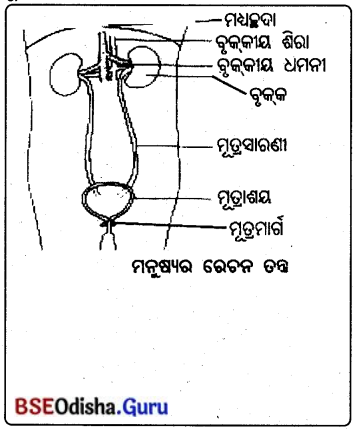
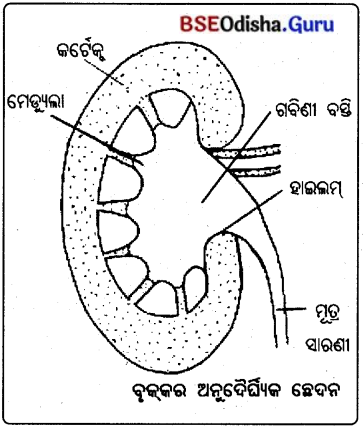
![]()
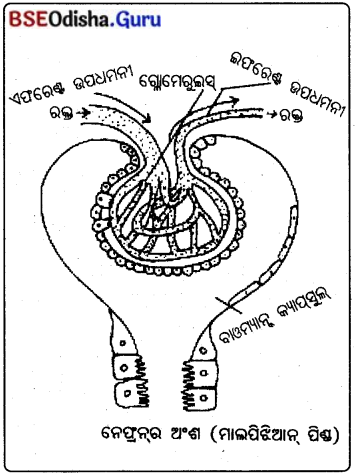
![]()

